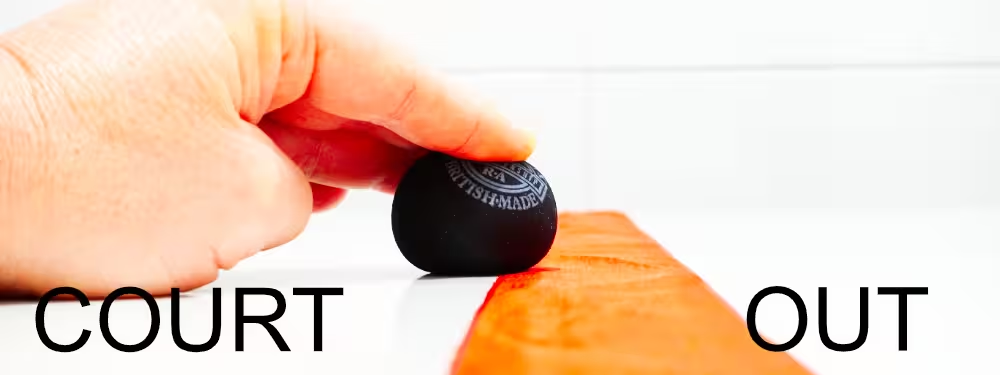10 May 2024 / 1-Min Read / Translate
Back in 2022, I wrote about When Is A Squash Ball In Or Out?, and I thought I would add some extra information to that article. For many years, lots of squash courts used to have concave outlines - at least the ones I played and coached all around the UK. As you have seen in the header, this was to make it easy to see if the ball was in or out. It solved 95% of the doubts because you could see a change in the flight path of the ball.
The other 5% was just bad luck. It could seem in from down on the court, but spectators on a balcony might clearly see it was out. It was, or is, a good system, but I have noticed a lot of courts are just using tape for the outlines. I am guessing because it's cheaper and easier.

Ideally is the key word here.
According to the data sheet linked to on the England Squash website,
d. The Side Walls
i. There shall be out of court lines on each side wall (concave or chamfered) to join the ends of the front wall line, and the back wall line which shall not project into the court but should be so shaped as to deflect any balls striking them (concave or chamfered).
However, the World Squash Federation's Court Construction Specifications add the word IDEALLY:
5.04.01: The side wall lines shall not project into the court but should ideally be so shaped as to deflect any balls striking them.

A close up of the plastic batton used by some manufacturers.
When I was younger, the concave line was created manually from plaster, but the plastic mould seems like a much better idea.
I wrote to Andrew of the SquashLibrary asking when the mention of shaped outlines was first introduced, and he kindly sent me this:
This wording was agreed at the SRA AGM on 25 Sept 1962 as an addition to denoting the width of the lines:
In respect of the outer boundary lines on the walls, it is suggested that the plaster should be so shaped as to produce a concave channel along such lines.
No, absolutely not. Personally, I believe the concave outlines are better, but tape works quite well. However, one issue with tape is that the ball may not actually touch the line but appear to. Look at the image below and you can see that if this were a proper line on a squash court instead of my white kitchen table, and it happend in the fraction of a second it would be clear that the ball touched the line, but it is possible for the ball to appear over the line but not be touching it. That's why the concave line solves that issue.

IdeallyIt's touching the line, but only just.
The concave line is simple, but clearly more work than tape. With glass courts become more and more popular, I suspect many more plaster courts will use tape.
It has been suggested that vibration detectors could be used, but I fear that that would require the line to be physically separated from the wall and then the cost increases. perhaps that's a solution for pro matches.
There's even been talk of using lasers to assess the in or out position of a ball - more on that in a future article.
I wrote this article to serve as a small piece of history for newer squash players. I like the concave outlines, but also recognise that they will probably disappear over the next few years.
If you have a topic you would like me to write about, just send me an email.